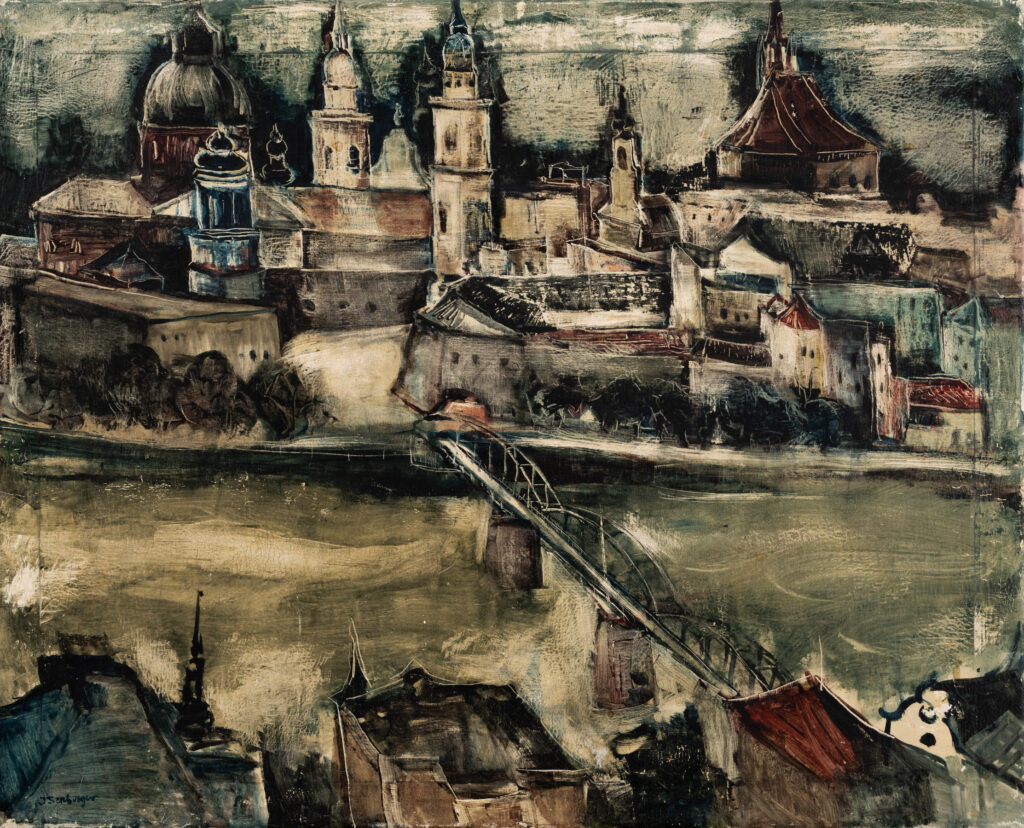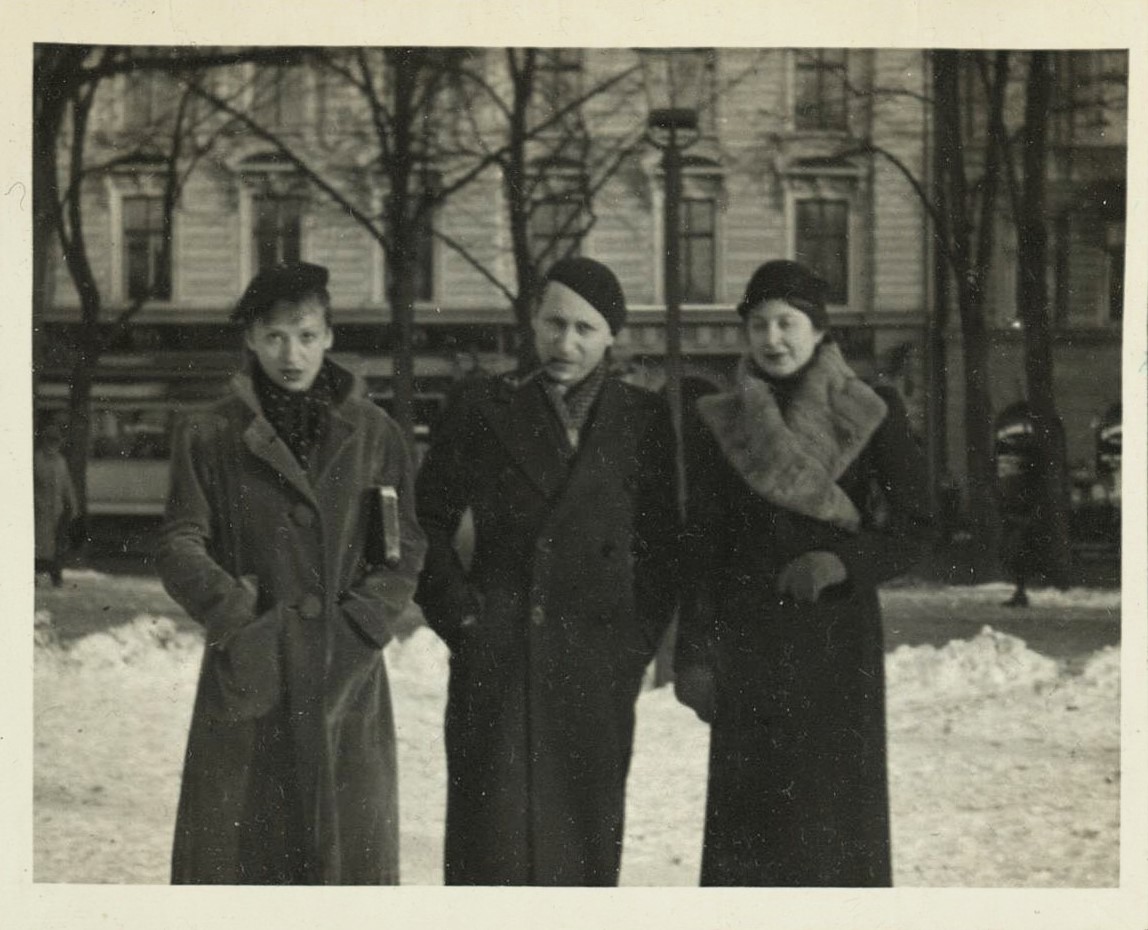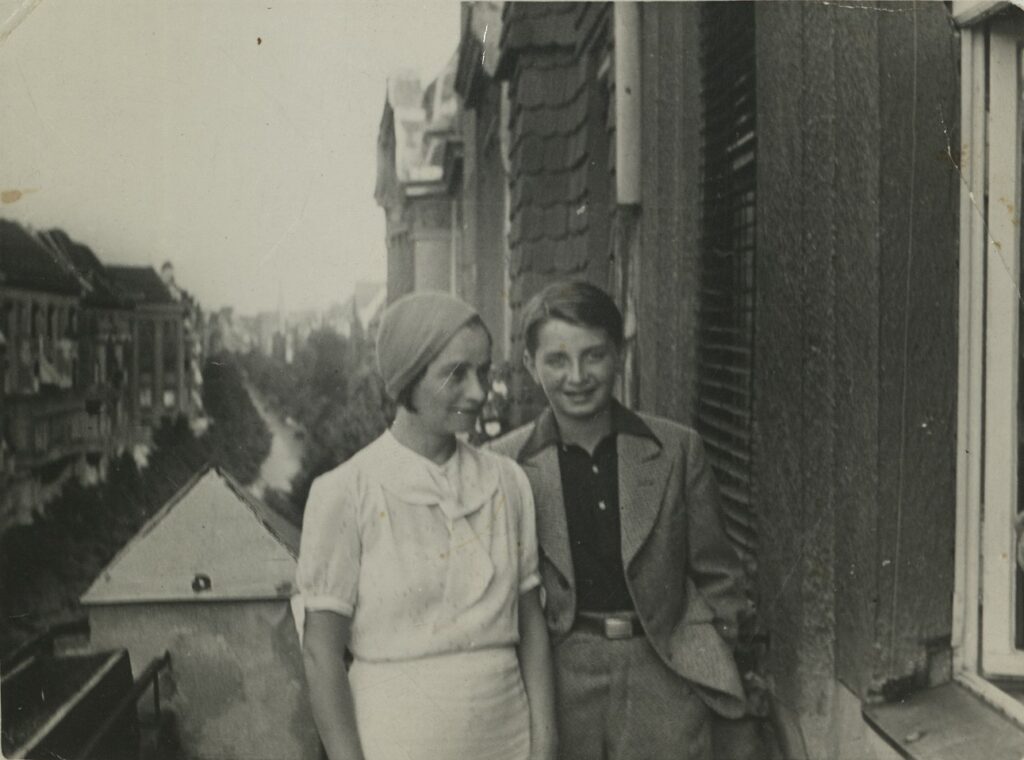Frankfurt Refugee Artist Eric Isenburger
Overview
Our work on the lives of Frankfurt refugee artist Eric Isenburger and his wife, the Polish-born dancer Jula née Elenbogen, began long ago in New York’s Hudson valley thanks to gallerist Cornelia Cotton and long-time friend of the Isenburgers Sheila Low-Beer. As sole authorized agents of Mr. Shmuel Elen, the owner of the intellectual property rights to the Isenburger artistic estate and archives, and in collaboration with Sheila Low-Beer in the United States, we serve as a central contact point for questions of authentication, provenance, rights and permissions. Thus far, we have published three substantial studies on the Isenburgers:
・“Jenseits des unwiederbringlichen Augenblicks: Bemerkungen zur Lebensgeschichte von Eric und Jula Isenburger” / “Beyond the Irretrievable Moment: Background Notes on Eric and Jula Isenburger” in Von Frankfurt nach New York: Eric und Jula Isenburger, ed. Susanne Wartenberg (Giersch Museum Frankfurt am Main) and Rolf Jessewitsch (Zentrum für verfolgte Künste Solingen), 19-125. Petersberg: Michael Imhof Verlag, 2017.
・ “Zeuge, Sachverständiger, Freund: Wolfgang Gurlitt und der Exilmaler Eric Isenburger” in Wolfgang Gurlitt: Zauberprinz, Kunsthändler, Sammler, ed. Hemma Schmutz, Elisabeth Nowak-Thaller (Lentos Kunstmuseum Linz), 217-228. München: Hirmer Verlag GmbH, 2019.
・ “Versteckte Kunst 1933: Eric Isenburgers Gemälde Salzburg” / “Hiding the Works 1933: Eric Isenburger’s Salzburg” in Die Reise der Bilder: Hitlers Kulturpolitik, Kunsthandel und Einlagerungen in der NS-Zeit im Salzkammergut, ed. Hemma Schmutz, Elisabeth Nowak-Thaller (Lentos Kunstmuseum Linz), 271-280. München: Hirmer Verlag GmbH, 2024.
Eric (born “Erich Jacob”) Isenburger (*1902 Frankfurt am Main, ✡︎ New York, 1994) trained originally as a graphic artist at Frankfurt’s Kunstgewerbeschule in the early 1920s and pursued his goal to become a painter on his own. He met his future wife, muse and frequent model Jula née Elenbogen (*1908 Augustów, ✡︎ New York, 2000) in the spring of 1925 in Frankfurt. They married in Warsaw in December 1927. Our biography traces their lives together through four broad periods: Vienna 1928-1931, Berlin 1931-1933, Paris, London and Stockholm 1933-1937, and Alpes-Maritimes, Internments and New York 1937-1941. Eric was interned in Antibes, Les Milles and Saint-Nicholas near Nimes; Jula was interned in Gurs. The influence of printmaking, in particular Isenburger’s experimental treatment of canvases as though they were plates for monotypes (backgrounds are laid down and wiped, rubbed and dabbed; compositional elements are highlighted or nuanced using the tips of brush handles, palette knives, razor blades and finer tools) made his work from the late Vienna and Berlin periods especially challenging for critics. His January 1933 exhibition in Wolfgang Gurlitt’s gallery in Berlin was still up when Hitler became Chancellor – giving it the distinction of having been one of the very first exhibitions targeted at the beginning of the Nazi era. “The irretrievable moment” of our biography’s title refers to that violent disruption of artistic energy, style and milieu in Berlin.
Provenance and Missing Works
Isenburger filed various claims against Germany after the war. He reported the loss of 300 drawings, 200 watercolors, 56 oil paintings and 36 etched copper plates (the latter confiscated from Wolfgang Gurlitt’s gallery in Berlin). The oil paintings include:
✓ landscapes from Spain, Italy, France, Vienna and Berlin;
✓ a very large double portrait (a self portrait with Jula, 2 m x 2 ½ m);
✓ a double portrait of dancers Georg Groke and Ruth Abramovitch in the same large format;
✓ a double portrait of Albert Einstein and Dr. Jakob Klatzkin;
✓ a portrait of dancer and choreographer Gertrud Kraus (1 m x 1 ½ m);
✓ a portrait of the Yiddish dramatic reader Yehuda Ehrenkranz;
✓ “and many more.”
Except for works in our own collection, including Isenburger’s painting of Salzburg/Vue de la Ville Salzburg which was on loan to the Lentos Kunstmuseum Linz in 2024, we know of no Isenburger works anywhere in Europe from the pre-1942 period that have provenances. Given that nearly 600 works were reported missing, museums exhibiting Isenburger works without provenances today are simply flouting the Washington Principles.
Provenance of Isenburger's Salzburg/Vue de la Ville Salzburg

Eric Isenburger. *1902 Frankfurt am Main, New York, ✡︎1994. Salzburg, 1931/32. Oil on canvas, 80 x 65 cm. Private collection Berlin. © Shmuel Elen. Photo: Christoph Petras, art-repro Berlin.
Sketches August 1931/August 1932 in Salzburg during the Salzburg Festival; painting completed by October 1932 in Berlin; exhibited January 1933 Galerie Gurlitt Berlin; hidden for two years at unknown location in Germany; shipped to Stockholm in early December 1934. Purchased from the Galerie Moderne Stockholm 13 January 1935 by prominent physician, art collector and founder of the Rilton Chess Cup Dr. Tore Rilton; in Stockholm until 1983†; by testament 1983 to Sonja Rilton, Stockholm; in Stockholm until 1996†; by testament to Stockholm attorney and chess aficionado Rolf Littorin and entrusted to his son Anders Littorin 1996; in Stockholm until 2014†; by testament 2015 to Ann-Helene Littorin, Stockholm; in Stockholm until 2022; sold on commission by Bukowskis Auktioner AB Stockholm on 14 January 2022 to the current owners.
Stockholm: The Isenburgers in Sweden

Jula and Eric Isenburger, Gulli Riwkin (née Bergman). Stockholm, winter 1934-1935. Photographer: assumedly Aminodov Riwkin. Isenburger Collection, IAN Ph (III), Album I. Courtesy of the Deutsche Nationalbibliothek, Deutsches Exilarchiv 1933-1945, Frankfurt am Main.
Our catalog essay for the exhibition “Reise der Bilder” marks the beginning of a closer investigation of the Isenburgers’ time in Sweden (1934-1935 and 1936-1937). It includes a brief (and abridged) history of Stockholm’s Galerie Moderne where Isenburger became the first German-Jewish refugee artist to exhibit there. Lotte Laserstein was the second in 1937-1938. The exhibition catalog was published in German only. To read the English version of our essay click the title below.
Berlin: the ‘Refugee’s Address Book’
‘Refugee’s Address Book’ is our own internal designation for the earliest and most important primary source in the combined IAN (Isenburger Archive Neuburg) and IAO (Isenburger Archive Ossining) archive portions in the Deutsche Nationalbibliothek, Deutsches Exilarchiv 1933-1945, Frankfurt am Main – 10 pages of handwritten addresses and telephone numbers capturing a world in flux. The pages are part of a tattered volume entitled Philologen-Jahrbuch (Kunzes Kalender) für das höhere Schulwesen Preussens, Hg. OStR Dr. Simon, Jg. XXXVIII, Schuljahr 1931-32, erster Teil. Breslau: Verlag des Philologen-Jahrbuches (Trewendt & Granier Verlag), 1931. As Isenburger notes on the volume’s title page, it was first used as a notebook in 1932. It also contains a record of costs for rent, electricity and repairs from July 1932 to 12 June 1933 at the Isenburgers’ custom-designed apartment and studio at Paulsbornerstrasse 77 in Berlin-Halensee and a handwritten list of 29 paintings labeled in pencil “1932-35 Stockholm, Sweden”.
Objects speak. Since the bound almanac and blank calendar for teachers and school administrators in Prussia holding the pages described above was not a consumer product, it is very likely that Isenburger’s copy was an extra from the desk of scholar, educator and publisher Dr. Samuel Weinberg – Jula’s uncle. Weinberg, his wife Channa Chaya Hinda and sons Yeshayahu and Shaul moved from Frankfurt’s Eschersheimer Landstrasse 57, where Eric and Jula first met, to Güntzelstrasse 46 in Berlin-Wilmersdorf in 1927.

Yeshayahu ‘Shaike’ Weinberg and his youthful-looking mother on the top-floor terrace of Güntzelstrasse 46, Berlin-Wilmersdorf, 1932-1933. Photographer unknown. Shaike would later become director of Tel Aviv’s Cameri Theatre, creator of the Beit Hatfutsot (now the ANU – Museum of the Jewish People at Beit Hatfutsot) and founding director of the U. S. Holocaust Memorial Museum in Washington, D. C. Isenburger Collection, IAN Ph (II) Privatphotos. Courtesy of the Deutsche Nationalbibliothek, Deutsches Exilarchiv 1933-1945, Frankfurt am Main. For a view of this Berlin location today, click here.
Isenburger’s ‘Refugee’s Address Book’ appears here in facsimile courtesy of the Deutsche Nationalbibliothek, Deutsches Exilarchiv 1933-1945, Frankfurt am Main, where the original is held in the IAN portion of the Isenburger Collection (K 1931-0). All images are © Shmuel Elen. An index of names is in preparation.
The ‘Refugee’s Address Book’ was compiled between 1932 and 1942 in sections that correspond generally to Eric and Jula Isenburger’s movements: Berlin, Paris, London, Stockholm, Alpes-Maritimes, internments and New York.
It is our hope that making this important primary source available will open new directions of inquiry, encourage interdisciplinary collaborations and invite contributions from interested scholars for non-exclusive publication on this website.
Eric Isenburger, ‘Refugee’s Address Book’ Page 1

Eric Isenburger, ‘Refugee’s Address Book’ Page 2

Eric Isenburger, ‘Refugee’s Address Book’ Page 3

Eric Isenburger, ‘Refugee’s Address Book’ Page 4

Eric Isenburger, ‘Refugee’s Address Book’ Page 5

Eric Isenburger, ‘Refugee’s Address Book’ Page 6

Eric Isenburger, ‘Refugee’s Address Book’ Page 7

Eric Isenburger, ‘Refugee’s Address Book’ Page 8

Eric Isenburger, ‘Refugee’s Address Book’ Page 9

Eric Isenburger, ‘Refugee’s Address Book’ Page 10

Eric Isenburger. ‘Refugee’s Address Book’, pages 1 – 10 above © Shmuel Elen. All rights reserved. Isenburger Collection, IAN K 1931-0. Courtesy of the Deutsche Nationalbibliothek, Deutsches Exilarchiv 1933-1945, Frankfurt am Main.